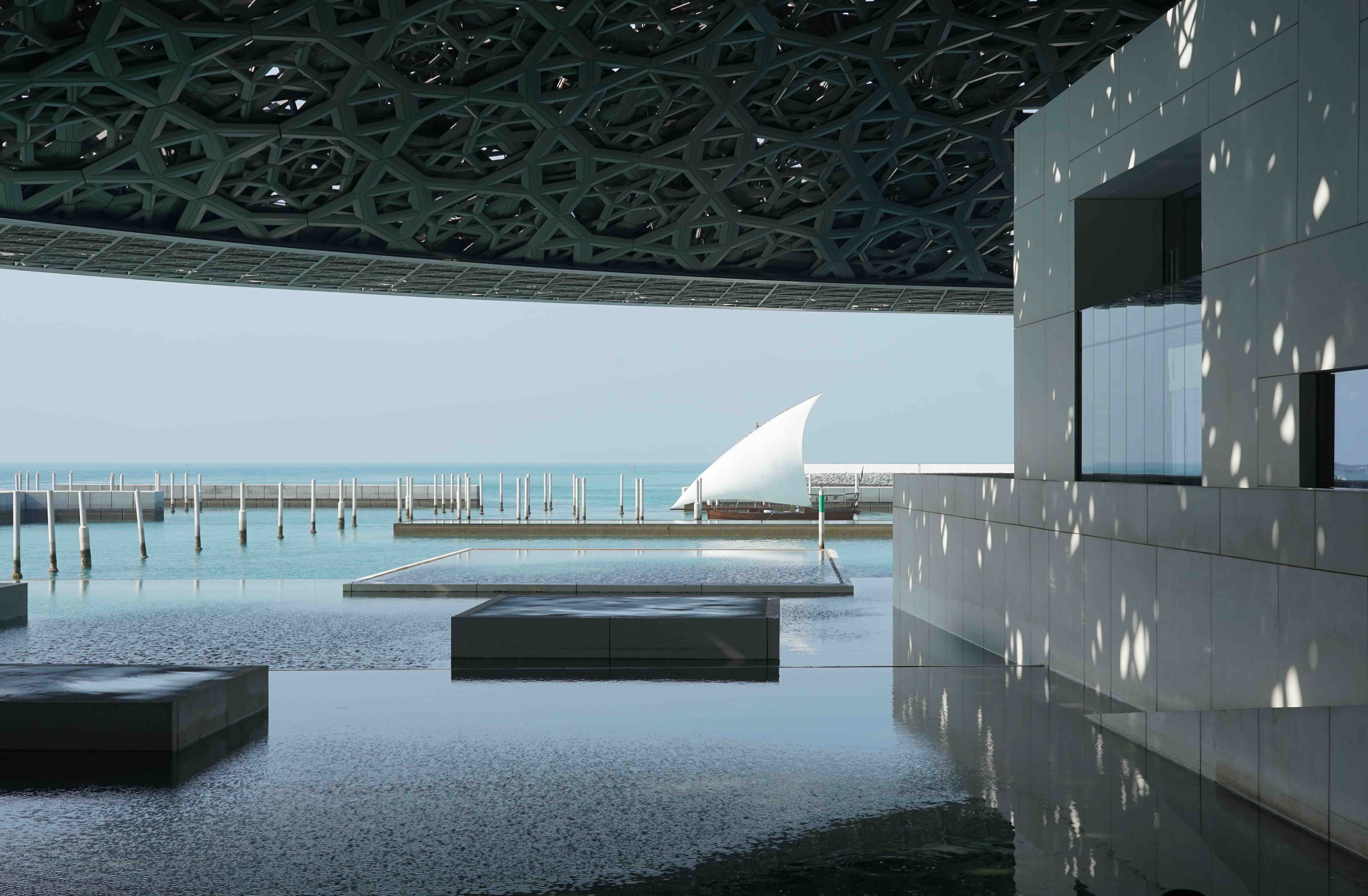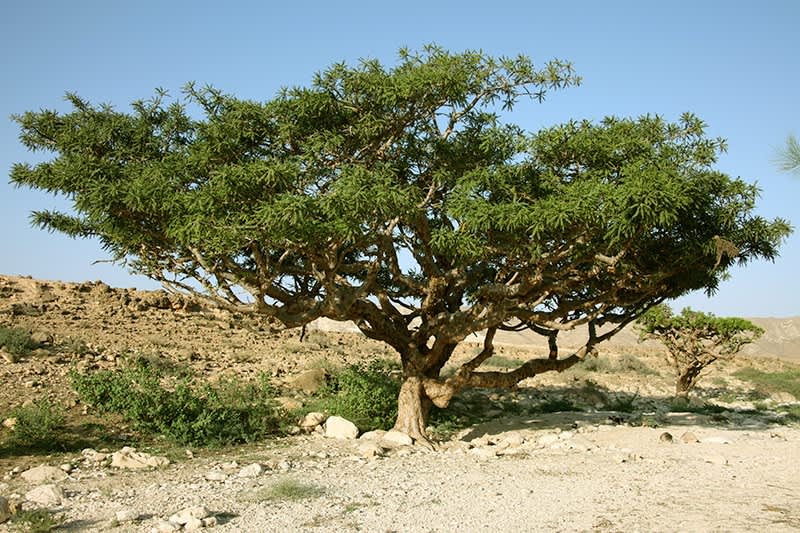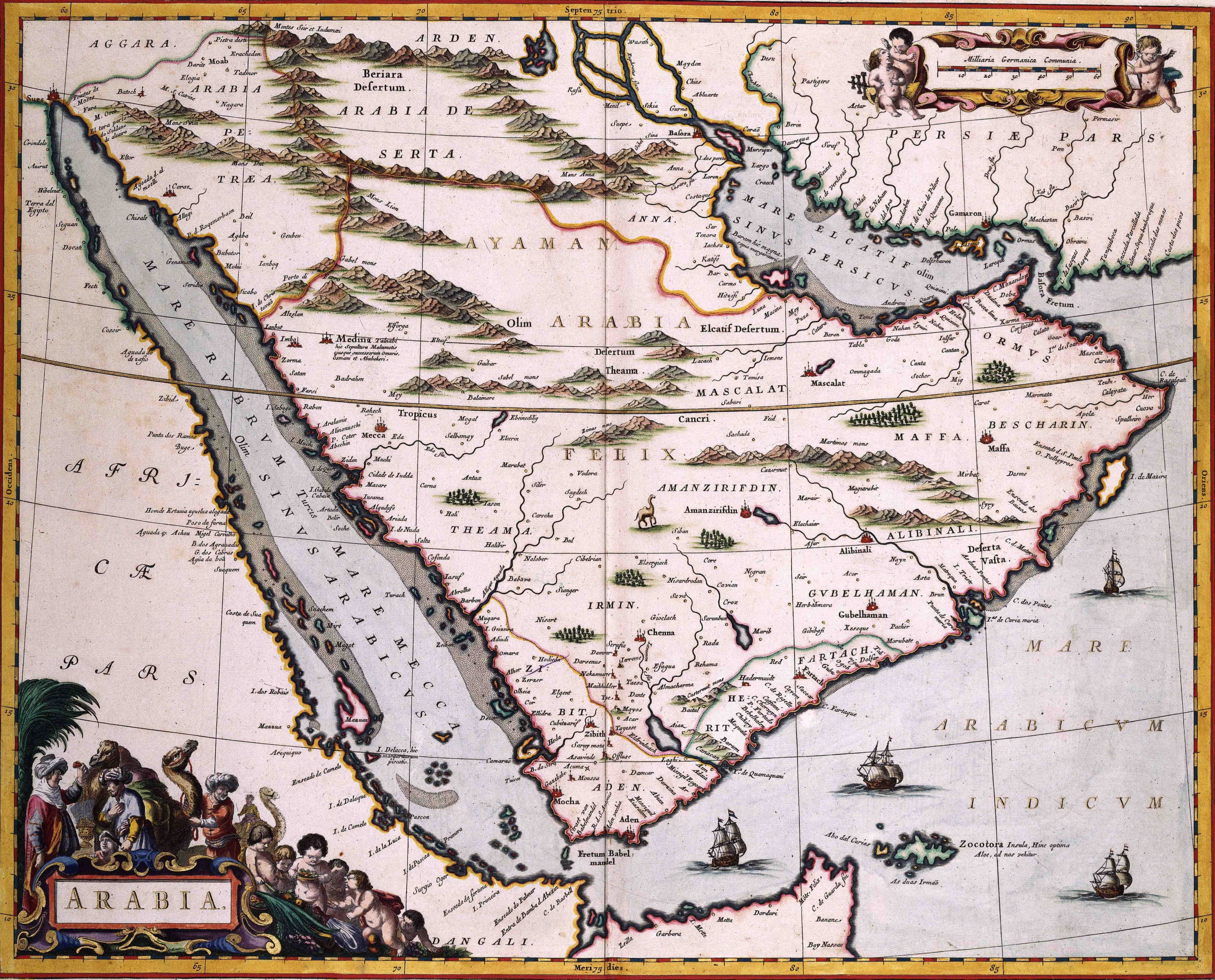
In this third blog post of our series on Dr. Jörn Günther Rare Books' fine manuscript of the Collectanea rerum mirabilium, or Polyhistor, by the 3rd century geographer Gaius Iulius Solinus, we embark again on an exciting journey and come home again. This time he brings us to Arabia.

Louvre Abu Dhabi Museum
Just before the travel ban in Europe began, I celebrated my recent retirement with a fascinating journey to the Sultanate of Oman and to Abu Dhabi, capital of the UAE. The latter visit was to see the stunning, new Louvre Abu Dhabi Museum, which tells the history of human creativity, exploring ideas and issues that have been shared between east and west, and have defined society. Of course, our navigator Solinus (citing Pliny) teaches us, and all who came before us, about Arabia. We quote and summarise here from the English translation (Liber 33).
Solinus describes Arabia as extending:
“... all the way to the rich, spice-bearing land held by the Catibanian and Scaenitan Arabs.... The reason for the name of the Scaenitae [nomads, Saracenoi, or Sarrasins] is considered to be that they live in tents, and do not have other homes. The tents themselves are goat blankets [NB: still to be seen today]; they say that the covers are woven from the hair of goats. In addition, they abstain entirely from eating pigs’ meat....
The Greeks named Arabia Eudaemon, which is 'Felix' [happy, blessed] in our tongue. You may hereby understand that Eudaemon was not vainly named: besides spices, of which it produces a great number, it yields frankincense. The whole country does not produce it: in its midst are the Astramitae, in a district of the Sabaei, ..... It is called Arabia, that is, 'sacred', for so it is understood to signify. The brushwoods are not public property, but, which is a novelty among barbarian nations, are passed by right of inheritance to family successors."

Frankincense tree or Boswelia sacra
He continues on their groves:
"Whoever, therefore, holds mastery over the grove, the Arabians call 'sacred'. ...some used to equate the frankincense tree with the mastic-tree, and others with the terebinth. [...] it was a tree with twisted twigs and branches like a maple’s, which poured forth juice as does the almond-tree, and ... it is cut ... when the sun is at its hottest."
On other plants, Solinus explains that:
"Myrrh grows in the same forests. Its roots rejoice when the soil around them is loosened, which produces the same effect as raking grape-vines. When laid bare, the roots flow with thick tears. The juice which comes forth spontaneously is the more valuable; that elicited by wounds in the bark is judged less so. Its rough bark is twisted into whorls and spikes, and its leaves are similar to those of an olive, though more wrinkled. It grows to a maximum height of five cubits. [...] The same Arabians gather cinnamon. This shrub is grown from a short stalk, with small and stunted branches, and is never above two cubits in height. Those which grow more thinly are considered the more select, while those which grow more thickly are thought less useful."
On their customs, the celebrated author tells us:
"The Arabians live far and wide, spread out, with different manners and customs. They have a great deal of hair, wear a headdress on their heads; a part with equal binding around, the beard shaved to their skin. They busy themselves with trade, not buying foreign wares, but selling their own, as they obviously have both rich forests and rich seas."

Map of Arabia, Joan Blaeu Atlas, Amsterdam 1662
On gemstones, he describes the following: "From this sea-coast... the first sardonyx gem [was brought] into our [Roman] world, where it aroused the firebrand of luxury. But the sardonyx is so well-known by everyone, that I think not much need be said about it...".
Solinus continues to describe several other precious stones, such as: "the Molochite, which is a richer green than the smaragdus...". The "Iris [...], which is six-cornered like the crystal. When struck by the rays of the sun, it gives a reddish reflection of the air out of itself, like a rainbow." And the "Androdamas", the "Paederos", or the "Arabica" [which] is like ivory: it refuses to be engraved. [...] It affects the eyes with this beauty, and draws the vision, holding the gaze of those who regard it."
Of course he also tells us about camels, reporting that: "Bactria [in central Asia] produces the most powerful camels. Although Arabia also breeds many camels they are different. The Arabian type has a double hump on its back, and the Bactrian a single hump. They never wear away their feet, for their feet are fleshy with certain backwards-facing excrescences of a lung-like quality. Thence, there is an antithetical problem when they walk: there is no supporting protection for the pressure of standing. They are used for two purposes. Some are suitable for bearing burdens, while others are swifter. They will not accept a more than reasonable load, and neither will they wish to go beyond an accustomed distance. ... They endure thirst for four days. When an opportunity of drinking arises, they take enough to satisfy themselves for their past privation, and to serve them for a long time in the future."

Camels in Oman with a castle
In today’s digital world, we keep our memories alive by making scrapbooks of the photo images we shoot during our vacations – all may have changed, but a book in hands still makes us happy. Travelling through books, in time and space, keeps memories alive, now more so than ever! However, our modern digital scrapbooks will certainly not last as long as our Solinus manuscript, made for the royal library of Aragon-Naples.
Also have a look at parts I and II of our series of blog posts on Solinus.
For Solinus in English, see:
https://topostext.org/work/747


